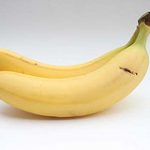
Bananas and Plaintains
When to Buy/In Season:
Bananas are in season all year. Produce is staggered in crops through the year in the tropics..
How to Select:
Bananas should be free of bruises or tears in the skin. They are best purchased with a small amount of green remaining in the stem end, and best eaten when a light freckling of the skin indicates the sugar has ripened.
Plantains are yellow and brown when semi-ripe, and can be boiled or sautéed as a side dish. Green plantains are unripe and starchy, but can be peeled, sliced and fried or added to soups. When plantains turn black and slightly sweet, they can be baked in their skins and served as a desert.
Organic Issues: Organic bananas are one of the most readily available organic produce. In contrast, conventional banana farming practices are extremely damaging to the environment, and future farming. Banana plantations have reached epidemic levels in Black Sigatoka Fungus, and Panama disease is also at extreme levels. Due to conventional techniques, treatments are increasingly ineffective, and scientists predict that genetic modifications may be required to save the world’s banana and plantains.
Organic banana and plantain farms, however, are resistant to outbreaks of these diseases, as well as common pests such as nematodes, black weevil, banana rust thrips, banana scab moths, etc.
Conventional bananas are also floated in tanks of sodium hydrochlorate solution to dissolve the sap that discolors the fruit.
Pesticide Issues:
EWG 2009 Dirty Dozen, #27 highest levels of pesticide residues
How to Store:
Bananas are typically stored at room temperature, however, they can be stored in the refrigerator (the skins will darken).
Banas release ethylene, which can spoil some produce. Store bananas away from:
Bananas
Broccoli
Brussels sprouts
Cabbage
Carrots
Cauliflower
Cucumbers
Eggplant
Lettuce and other leafy greens
Parsley
Peas
Peppers
Squash
Sweet potatoes
Watermelon
Freezer
To Freeze Fresh Bananas:
Canning
See our Basics of Canning Fruit at Home
Home Canned fruits can be stored for up to 1 year; they may lose quality after that point. Commercially canned fruit can be stored up to 3 years.
Drying:
See our Basics of Drying Fruit at Home
To dry bananas, choose any large, slightly brown-speckled, yellow variety. Peel and cut into 1/4 – 1/2 inch slices. Pretreat by dipping if desired. Dry at 130 – 135oF until pliable to almost crisp. Water content of banase is 76%.
Dried fruit may be stored 6 – 12 months at room temperature, or indefinetly in the freezer.
Photo Source: S and C’s
Return to Buying and Storage Guide for Fruits


